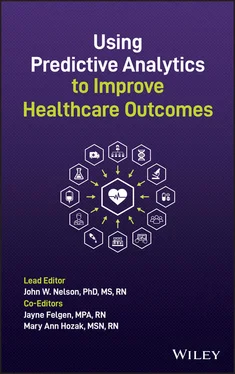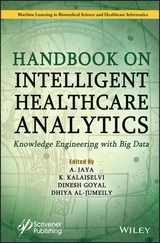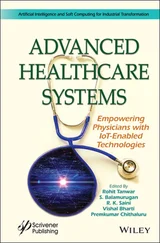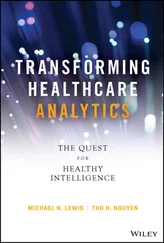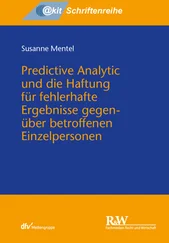Using Predictive Analytics to Improve Healthcare Outcomes
Здесь есть возможность читать онлайн «Using Predictive Analytics to Improve Healthcare Outcomes» — ознакомительный отрывок электронной книги совершенно бесплатно, а после прочтения отрывка купить полную версию. В некоторых случаях можно слушать аудио, скачать через торрент в формате fb2 и присутствует краткое содержание. Жанр: unrecognised, на английском языке. Описание произведения, (предисловие) а так же отзывы посетителей доступны на портале библиотеки ЛибКат.
- Название:Using Predictive Analytics to Improve Healthcare Outcomes
- Автор:
- Жанр:
- Год:неизвестен
- ISBN:нет данных
- Рейтинг книги:5 / 5. Голосов: 1
-
Избранное:Добавить в избранное
- Отзывы:
-
Ваша оценка:
- 100
- 1
- 2
- 3
- 4
- 5
Using Predictive Analytics to Improve Healthcare Outcomes: краткое содержание, описание и аннотация
Предлагаем к чтению аннотацию, описание, краткое содержание или предисловие (зависит от того, что написал сам автор книги «Using Predictive Analytics to Improve Healthcare Outcomes»). Если вы не нашли необходимую информацию о книге — напишите в комментариях, мы постараемся отыскать её.
Discover a comprehensive overview, from established leaders in the field, of how to use predictive analytics and other analytic methods for healthcare quality improvement. Using Predictive Analytics to Improve Healthcare Outcomes
before
proven in advance
Using Predictive Analytics to Improve Healthcare Outcomes
Using Predictive Analytics to Improve Healthcare Outcomes — читать онлайн ознакомительный отрывок
Ниже представлен текст книги, разбитый по страницам. Система сохранения места последней прочитанной страницы, позволяет с удобством читать онлайн бесплатно книгу «Using Predictive Analytics to Improve Healthcare Outcomes», без необходимости каждый раз заново искать на чём Вы остановились. Поставьте закладку, и сможете в любой момент перейти на страницу, на которой закончили чтение.
Интервал:
Закладка:
Her excitement at the opportunity to hear revealing new data about her unit, firsthand from the data scientist, was a large part of what drew her to take on the leadership responsibility of co‐chairing the staff council.
Two major milestones stood out for her. First, she was struck by the power of the Primary Nurse–patient relationships on the unit. During her time co‐chairing the council, this nurse cared for a chronically ill cancer patient who was about her age. As her Primary Nurse, she developed a relationship with this patient and was shocked and humbled when the patient requested—rather insisted —that she have her surgery on a day the Primary Nurse was working. This pattern of the patient coordinating her care with her oncologist and her Primary Nurse continued for months. Over time, patient and nurse worked together to be sure the Primary Nurse was working at the same times the patient came in for treatment. This event represented a milestone in the rollout of the Relationship‐Based Care model. This nurse’s actualization of autonomy as a Primary Nurse became a beacon to all of the staff councils and unit staff members.
This nurse’s actualization of autonomy as a Primary Nurse became a beacon to all of the staff councils and unit staff members.
Secondly, as a co‐chair of the staff council, this nurse engaged in using data to identify barriers to the implementation of Relationship‐Based Care. As staff council members began to recognize patterns in the disruption of patient care, they requested permission from their nurse manager to start a support group for patients and families on their unit. The manager fully supported this idea and gave the nurses one hour per week of protected time in which to conduct a regular support group. The unit social worker, in the role of co‐chair of the Patient‐Family Advisory Council, also supported this effort. An interdisciplinary team met weekly with patients and families to listen to the ways in which the team could make care better for them and other patients. The nurse recalls that practical suggestions emerged from these meetings such as the need to have sandwiches stocked on the floor for patients at night and the need for family members to have more direct access to the Primary Nurse or associate nurse. The meetings produced ideas on which the practice council could take action to implement changes to enhance patient and family satisfaction. The unit‐based Patient‐Family Support Group, created by the staff council, grew to be the model for an institution‐wide Patient‐Family Advisory Council that is still in place today.
How Leaders Can Advance the Use of Predictive Analytics and Machine Learning
Thus far it has been reviewed how leadership at every level of an organization can help advance a framework of care such as RBC. What is most promising with all of the technology we now have available to us, however, is that once we set up systems of data collection to monitor change in a culture, we then have the ability to integrate that cultural data into more complex models of measurement. Access to these complex models of measurement moves the organization from mostly retrospective use of data to the proactive use of data to manage healthcare outcomes before they occur.
What if you could know the probability that a proposed change would be effective, before you put a lot of time and energy into implementing the change? What if you could know something about an initiative's effectiveness in your organization before you rolled it out to your staff? That is what predictive analytics and machine learning can offer you.
Many other professions use predictive analytics to learn the predictors of outcomes and then move on to machine learning and forecasting of risk. This became clear at the mathematics conference mentioned in the preface of this book. Dr. Nelson listened to researchers in logistics and mining where they used complex measurement models in simulations to study how changes to the process of work, using existing data, could be understood prior to making actual changes in the work process.
In healthcare, this same technology is available to leaders who are willing to harness the expertise of existing staff members, each possessing unique knowledge in different domains, to form teams capable of working in predictive analytics and machine learning. For example, programmers in most healthcare organizations are typically asked simply to program the data points necessary to track and manage outcomes. What most leaders in healthcare do not realize is if programmers could work closely, for even a short time, with analysts trained in structural and measurement models, many programmers could carry out most of the predictive analytics and machine learning operations that the top payed data scientists do. The challenge with leaving the programmer and analyst alone is that they almost always lack an understanding of the processes of clinical care. If a team of three could work together, a programmer, an analyst, and a clinician who also works in systems (e.g. a clinical leader), they could program their technology to tell the relevant stories of healthcare. This team could design measurement instruments to capture the extent to which a cultural change is taking place and even to predict outcomes.
Dr. Nelson has found that his 11 years as a bedside nurse, his love of using mathematics to tell a story, and his years of work in software development have served him well in “seeing the stories” as he views data. It is these “stories” that make complex measurement models possible. Anything can be measured if its story can be articulated. The challenge is getting people together who can not only hear the story but can then assemble models and use technology to predict what will happen next.
Understanding an Organization's “Personality” Through Data Analysis
Spending time with our data analyst helped us understand many new things. For example, we now realize that collecting data is like interviewing hundreds of people. The interviews are carefully examined in order to understand the significance of the varied responses from people in different areas of care, people from different disciplines, and people from specific demographic groups in the organization. We learned that analyzing data is like carefully listening to what each person is saying. You can hear what individuals and groups are saying, and you can learn something about who is thriving and who is struggling. This can be an enjoyable event, and it can also be stressful when you notice the sometimes vast differences in experience and outcomes, even within the same organization, sometimes even within the same unit. Each organization or unit has an overall culture, almost like a personality, where various behaviors are appreciated and others are tolerated, sometimes to the detriment of everyone involved. “Listening” to the data makes possible the retelling of what was learned about the culture and experience of the people. In the hands of a skilled analyst, data can tell a heart‐felt, and sometimes a heart‐breaking, story.
Data can tell a heart‐felt, and sometimes a heart‐breaking, story.
Having valid data about the effectiveness of any dimensions of a framework of care delivery enables the people closest to the work to engage in action planning, and it also makes it possible to propose predictive analytics studies which would allow people to move beyond real‐time use of the data into forecasting the likely outcomes of proposed changes. Organizational leaders and data managers can work together to tell the story of cultural change, prompted by the implementation of a framework of care, and use data to guide the change in the desired direction.
Читать дальшеИнтервал:
Закладка:
Похожие книги на «Using Predictive Analytics to Improve Healthcare Outcomes»
Представляем Вашему вниманию похожие книги на «Using Predictive Analytics to Improve Healthcare Outcomes» списком для выбора. Мы отобрали схожую по названию и смыслу литературу в надежде предоставить читателям больше вариантов отыскать новые, интересные, ещё непрочитанные произведения.
Обсуждение, отзывы о книге «Using Predictive Analytics to Improve Healthcare Outcomes» и просто собственные мнения читателей. Оставьте ваши комментарии, напишите, что Вы думаете о произведении, его смысле или главных героях. Укажите что конкретно понравилось, а что нет, и почему Вы так считаете.
